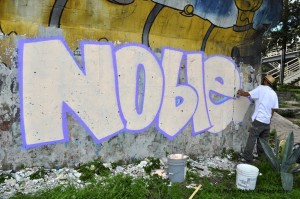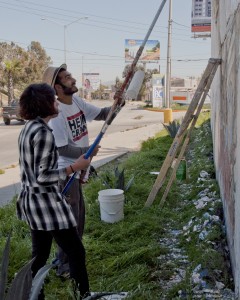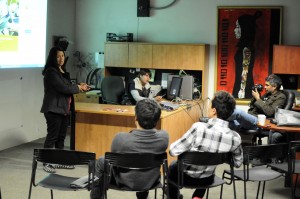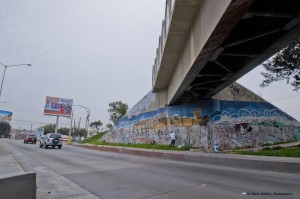It is often said that Tijuana is a “ciudad de paso.” That is, a place of passage, a city where tourists come and go. A launching pad for migrants who are only just passing through on their way to the United States.
Indeed, after John Spreckels financed a railroad line from Yuma to San Diego between 1909 and 1911, passing through Tecate and Tijuana, American and Mexican investors built an entertainment empire in Tijuana, dedicating much of the city’s public space to providing entertainment and escape for American tourists.
And yes, for each of the U.S.’s many mass deportation movements–the “Mexican Repatriation” of the 1930s, “Operation Wetback” of 1954, and the mass deportations today under the Obama Administration– Tijuana’s location on the border has provided the displaced with a place to land.
Yet this narrative of Tijuana as a “ciudad de paso” obscures as much as it reveals.
Ciudad Habla, or “The City Speaks,” offers a more nuanced and complex history of our city. CiudadHablaTijuana is a project initiated by a group of Tijuana residents, whose aim is to give voice to the people of Tijuana through the medium of urban art projects. Their practices in the visual arts combined with a commitment to community development give organizers of the project a common frame of reference. Photographer Gabriela Posada del Real, director of Reacciona Tijuana, painter and UABC professor Garzón Masabó, along with a private donor who years ago started painting murals in Tijuana, developed the project to activate the consciousness of Tijuanenses by celebrating the rich and diverse visual culture of the region.
The project involves the community directly in telling its own story through the process of design and production of works of art. Using general surveys as well as personal interviews with community members, the organizers solicit the people’s ideas and preferences. What colors do you like to see in the city? What locations do you feel are most important for public murals?
Through direct solicitation, the community learns to develop their own aesthetic and ethical values. And in the process, Tijuanenses consciously improve the visual character of their city’s public spaces. Many believe that when residents take ownership of the spaces where they live, people will then be more likely to engage in positive democratic political processes. Art raises consciousness, not only aesthetically but politically.
Ciudad Habla solicits proposals from local artists, and the artists themselves work with the community. Local artists have presented their proposals in open discussion and critique sessions at UABC, under the direction of Professor Garzón Masabó. The selection process is thus both cooperative and competitive, and the winners are awarded stipends of $10,000 pesos ($850 dollars) to produce their work. The project guidelines require that the artist must include the community in some way.
The project selected by Ciudad Habla for the month of March is called “En pocas palabras: Tijuana” or “In a few words: Tijuana.” Artist Nestor Mondragon (Spel Uno of Tijuana’s well-known HEM crew) proposed a mural consisting of one hundred words that they felt best describe their city, solicited from a cross-section of Tijuana residents. Mondragon spent two weeks doing interviews with residents of colonias across the city: El Florido, Altamira, Buenos Aires, Pípila, Otay and the Centro.
With these words, Mondragon has designed and is painting a mural underneath the old railroad bridge on the Via Rapida Poniente. The mural replaces a now faded mural painted several years ago, and participates in a fifteen year long tradition of public arts and murals in the city.
Tijuana’s rapid growth and its location as a major world city on the northernmost border of Latin America and on the eastern edge of the Pacific Rim contribute to a rich, diverse culture of immigrants. Families come, and they put down roots. And they bring their local cuisine from Oaxaca or Nayarit, rich musical traditions like Son Jarocho from Veracrus, the city’s open, friendly quality, shaped by the character of its Sinaloenses.
Like many world cities, Tijuana has experienced rapid growth in the 20th century. The Border Industrialization Program of the 1960s offered factory jobs and daily wages to thousands of migrants from rural Mexico. Tijuana from a tiny pueblo of 250 inhabitants to a city of 153,000 in 1960. Between 1960 and 2000, the population of Tijuana grew by 662.7%, and in 1995, one year after NAFTA, Tijuana’s population had grown to 991,000. Today, it is estimated that 1.5 million people call Tijuana home.
And it is said that Tijuana’s footprint grows by one square kilometer per day.
With the support provided by Ciudad Habla, perhaps more of what is said about Tijuana will come from the residents themselves.




